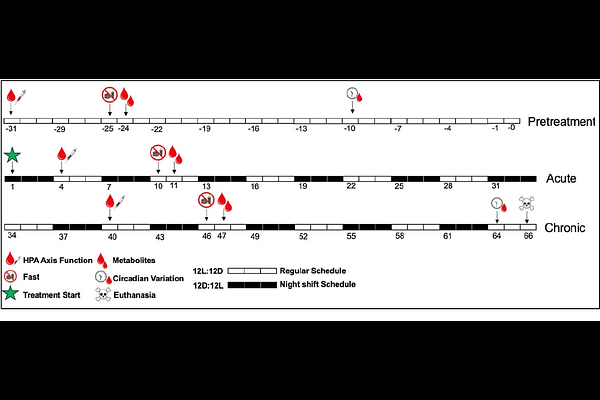Mimicking the night shift: Hypothalamic-pituitary-adrenal (HPA) axis regulation, energy homeostasis, and oxidative stress in a model diurnal songbird

Mimicking the night shift: Hypothalamic-pituitary-adrenal (HPA) axis regulation, energy homeostasis, and oxidative stress in a model diurnal songbird
Pham, K.; Coutts, V. M.; Hoffman, A. J.; Wada, H.
AbstractEverchanging socioeconomic demands, coupled with modern day technological advancements have lifted constraints on human activity patterns, enabling us to take advantage of the 24-h period. However, varying patterns of light at night and sleep/wake may come at the cost of disrupting endogenous rhythms that govern biological processes and maintain homeostasis. To this end, we exposed zebra finches (Taeniopygia guttata castanotis), a diurnal songbird, to a consistent light/dark cycle of 12L:12D or alternating lighting patterns of 12D:12L and 12L:12D every three days for 66 days to mimic night shift work conditions. Surprisingly, we found that corticosterone profiles were inverted in birds exposed to simulated night shift work, with a slight trend indicating the inversion of melatonin profiles. Moreover, they had poor HPA axis reactivity in response to a standardized capture and restraint challenge and a significant reduction in corticosterone levels at ZT0 after simulated night shift work. Yet, we did not detect changes in body mass, subcutaneous fat deposits, or 4-hydroxynonaneal damage in the brain or liver. Our study underscores the need to capitalize on unique model organisms to evaluate consequences and resilience of simulated night shift work to inform public health decisions and the role of circadian plasticity.